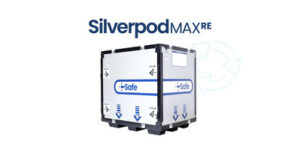RYBREVANT® (amivantamab-vmjw) in Combination With Chemotherapy Is the First FDA Approved Therapy for First-line Treatment of Patients With Non-Small Cell Lung Cancer with EGFR Exon 20 Insertion Mutations

llustration depicting lung cancer treatment with RYBREVANT, representing the latest advancement in NSCLC therapy.
Johnson & Johnson (NYSE: JNJ) announced today that following a priority review, the U.S. Food and Drug Administration (FDA) has approved RYBREVANT® (amivantamab-vmjw) in combination with chemotherapy (carboplatin-pemetrexed) for the first-line treatment of patients with locally advanced or metastatic non-small cell lung cancer (NSCLC) with epidermal growth factor receptor (EGFR) exon 20 insertion mutations as detected by an FDA-approved test.1 This FDA action converts the May 2021 accelerated approval of RYBREVANT® to a full approval based on the confirmatory Phase 3 PAPILLON study.
“When aiming for the best possible treatment outcomes, a targeted approach should be used in the first line for patients with EGFR exon 20 insertion mutations, as this is a commonly applied practice for patients with NSCLC harboring other molecular driver alterations,” said Joshua K. Sabari, M.D.*, an oncologist at NYU Langone’s Perlmutter Cancer Center and study investigator.* “The results observed in the PAPILLON study showed significant improvement in progression-free survival, supporting the use of this regimen as the potential standard-of-care in the first-line treatment of these patients.”
Worldwide, lung cancer is one of the most common cancers, with NSCLC making up 80 to 85 percent of all lung cancer cases.2,3 Alterations in EGFR are the most common actionable driver mutations in NSCLC.4 Clinical data show patients with EGFR exon 20 insertion mutations generally experience limited benefits with currently approved third-generation EGFR tyrosine kinase inhibitors and chemotherapy.5,6 NSCLC driven by EGFR exon 20 insertion mutations carries a worse prognosis and shorter survival rates compared with lung cancer driven by other EGFR driver mutations.7
“For patients with lung cancer and their families, each breakthrough in treatment provides not only a new option, but a potential lifeline. The approval of RYBREVANT plus chemotherapy heralds a promising new first-line treatment option for patients newly diagnosed with non-small cell lung cancer where their driver mutation is an EGFR exon 20 insertion,” said Marcia Horn**, Executive Director of the Exon 20 Group and CEO of ICAN, International Cancer Advocacy Network. “This new regimen is a major advance over chemotherapy alone. We’ve seen first-hand the extended survival that Exon 20 Group patients experienced on RYBREVANT plus chemotherapy in the PAPILLON study, and we’re delighted that this historic treatment option, which specifically targets the EGFR exon 20 insertion mutation, has been approved.”
The FDA approval is based on positive results from the randomized, open-label Phase 3 PAPILLON study, which showed RYBREVANT® plus chemotherapy resulted in a 61 percent reduction in the risk of disease progression or death compared to chemotherapy alone.1 Results also showed treatment with RYBREVANT® plus chemotherapy improved objective response rate (ORR) and progression-free survival (PFS).1 Based on PAPILLON data, the National Comprehensive Cancer Network ® (NCCN ®) updated its’ NCCN Clinical Practice Guidelines (NCCN Guidelines®) to include a category 1 recommendation for amivantamab-vmjw (RYBREVANT®) plus chemotherapy as a preferred first-line therapy for patients with NSCLC with EGFR exon 20 insertion mutations.8 †‡
“We are redefining care for patients with non-small cell lung cancer by advancing innovative regimens that can be used early, with the goal of extending survival,” said Kiran Patel, M.D., Vice President, Clinical Development, Solid Tumors, Johnson & Johnson Innovative Medicine. “RYBREVANT plus chemotherapy is the first targeted approach approved for the first-line treatment of patients with NSCLC with EGFR exon 20 insertion mutations. We look forward to building on this latest milestone as we continue to accelerate our transformative lung cancer portfolio.”
Warnings and Precautions include Infusion Related Reactions (IRR), Interstitial Lung Disease (ILD)/Pneumonitis, Dermatologic Adverse Reactions, Ocular Toxicity and Embryo-fetal Toxicity. The most common adverse reactions (≥20 percent) were rash, nail toxicity, stomatitis, IRR, fatigue, edema, constipation, decreased appetite, nausea, COVID-19, diarrhea and vomiting. The most common Grade 3 or 4 laboratory abnormalities (≥2 percent) were decreased albumin, increased alanine aminotransferase, increased gamma-glutamyl transferase, decreased sodium, decreased potassium, decreased magnesium, and decreases in white blood cells, hemoglobin, neutrophils, platelets, and lymphocytes.1









